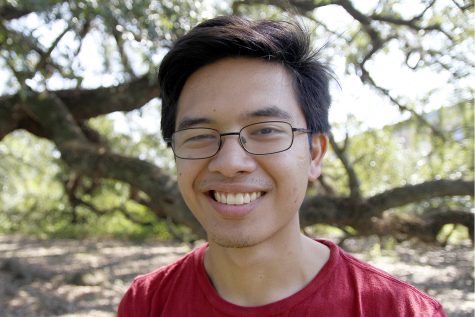
The administration looked back on nearly a full academic year with this fiscal year’s university budget as well as the first year of The Southeastern Promise scholarship and considered the future.
Assistant Vice President for Enrollment Management Dr. Kay Maurin discussed how the first year of implementing The Southeastern Promise has gone.
“It is early, but preliminary data indicates that students, freshmen in particular, are enrolling in and completing more credit hours in the academic year than in the previous year,” said Maurin. “The Promise requires that a student complete 30 hours toward degree by the conclusion of each academic year. We will have definitive data on the impact to the progression of beginning freshmen at the end of the Summer 2018 semester.”
According to Maurin, “approximately 850 qualified students from the 2017 beginning freshmen class enrolled” in the Promise. Maurin discussed the reception to The Southeastern Promise.
“Parents, in particular, are very pleased with The Southeastern Promise in that it allows for more approximate cost planning for earning a four-year degree,” said Maurin. “We have received inquiries from universities out of state that are interested in implementing similar programs because they see the benefit to students in not only managing costs but encouraging progression and graduation.”
The Southeastern Promise will also be offered to 2018 beginning freshmen who can sign up at their orientation sessions.
“We have made several changes to the Promise for the incoming freshman class based on input and experience with implementing the 2017 Promise,” said Maurin. “The changes include extending the enrollment period from the first day of fall classes to the last day of fall classes to ensure we communicate the responsibilities and expectations of the Promise and encourage participation.”
The administration also modified the Promise by changing the date to declare a major.
“The date to declare a major was moved from the first day of the second fall semester to the week prior to priority registration in the first spring semester,” said Maurin. “Many students have satisfied general education requirements by that time, and a major needs to be declared so students can be advised and register for the correct sequence of courses.”
Vice President for Administration and Finance Sam Domiano discussed priorities for the next fiscal year’s budget.
“The greatest priority as of now is that higher education receives stable funding for the 2018-2019 fiscal year,” said Domiano. “Given the challenges the state is facing with covering a nearly $692 million budget shortfall, amount after the estimated adjustment for changes in the federal tax laws, maintaining stable funding would have to be our single, most important priority.”
Concerning next year’s budget, Domiano’s greatest concern is if state funding will be reduced.
“Added to that concern, however, is the uncertainty around the TOPS funding, which has a tremendous impact on current and potential students,” said Domiano. “With nearly 35 percent of our students receiving TOPS, this unknown poses a real threat to our efforts of recruiting and retaining some of the best and brightest to Louisiana and more specifically, to Southeastern.”
According to Domiano, no major issues or concerns related to this year’s budget have surfaced yet.
“I feel much of this can be attributed to the fact that the university has a well established budgeting process enabling funds to be allocated to identified priorities based on the availability of funds,” said Domiano. “Enrollment has also remained strong and consistent with the budget, which is a critical component given that the majority of our operating dollars are self-generated from student tuition and fees. While there remain questions about next year’s state funding, state funding for the current fiscal year has also remained stable.”
Domiano discussed budget planning for the next fiscal year.
“We continue to strive for budget stability, which includes our ability to continue to enhance our efforts in recruiting and retaining a quality workforce, especially our faculty,” said Domiano. “While we were fortunate to provide a merit increase for the first time in nearly a decade during the 2017-2018 fiscal year, it will remain a goal for us to continue to offer some form of adjustment should funding be sufficient to support it.”








